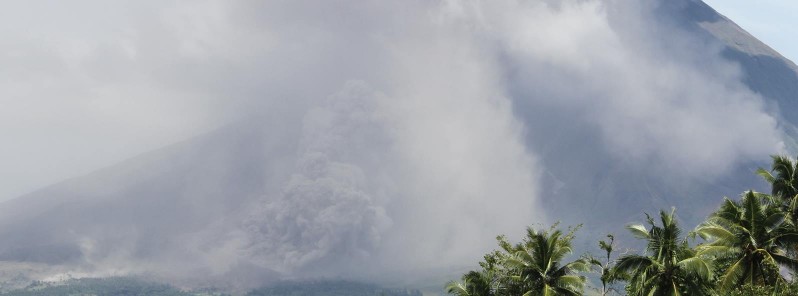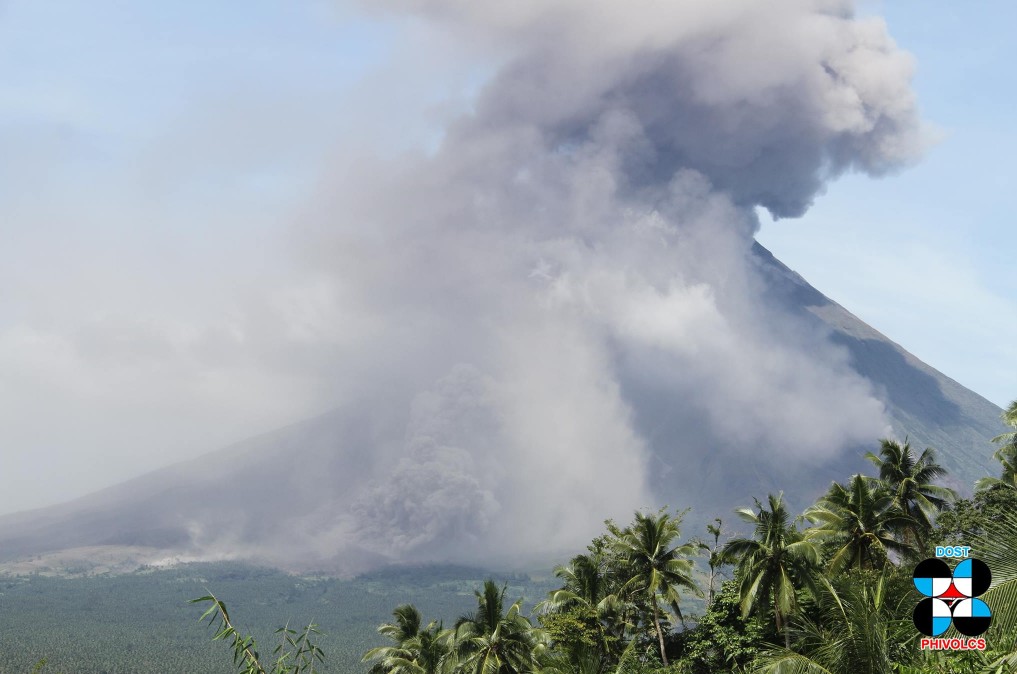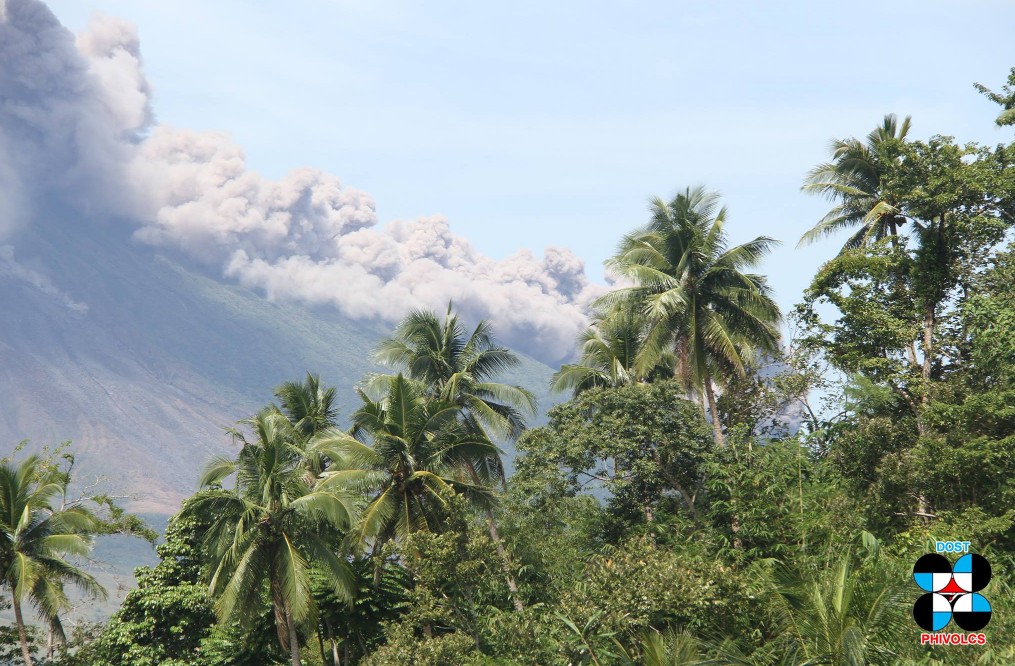Significant ashfall around Mayon volcano after energetic lava effusion and pyroclastic flows

A significant ashfall was reported in the municipalities of Camalig and Guinobatan in the province of Albay, Philippines shortly before 13:00 UTC on January 29, 2018, after energetic lava effusion started at Mayon volcano with sporadic lava fountaining events and generation of lava-collapse fed pyroclastic density currents (PDCs).
According to PHIVOLCS, the energetic lava effusion started at 11:50 UTC yesterday (19:50 local time) and was accompanied by sporadic lava fountaining events and pyroclastic flows.
Although the upper slopes were heavily obscured, the seismic record indicated onset of this eruption cycle with a large-volume lava collapse at the summit crater that fed PDCs on the Mi-isi and Bonga Gullies, followed by lava fountaining at 12:16 UTC that lasted 8 minutes.
This was followed by obscured large volume lava effusion that lasted 96 minutes, interspersed with sporadic lava fountaining and/or PDC generation based on the seismic record.
Sporadic lava fountaining was visually and seismically detected and persisted until 15:06 UTC with lava fountains reaching 200 meters (656 feet) above the crater. Ash plumes generated by these events reached 1.5 km (4 920 feet) above the crater.
"Significant ashfall was reported in Camalig and Guinobatan, Albay before 13:00 UTC, possible due to the lava fountaining and PDC events," PHIVOLCS said today.
Traffic was halted in the municipalities due to poor visibility and authorities urged residents to seek treatment for skin irritation and other health issues and immediately clean their roofs and cars because of the corrosive effect of the volcanic ash.

Mayon volcano erupting on January 30, 2018. Credit: PHIVOLCS

Mayon volcano erupting on January 30, 2018. Credit: PHIVOLCS

Mayon volcano erupting on January 30, 2018. Credit: PHIVOLCS
In total, Mayon's seismic monitoring network registered 119 volcanic earthquakes, 9 tremor events, 2 of which correspond to lava fountaining events, 2 distinct episodes of PDC generation from lava collapse, and 68 rockfall events. Rockfall events were generated by the collapsing lava front and margins of the advancing lava flow on the Bonga and Mi-isi Gullies.
Electronic tilt and continuous GPS measurements indicate a sustained swelling or inflation of the edifice since November and October 2017, consistent with pressurization by magmatic intrusion.
Alert Level 4 remains in effect over Mayon volcano, the agency said, strongly advising residents to be vigilant and desist from entering the 8 kilometer-radius danger zone, and to be additionally vigilant against pyroclastic density currents, lahars and sediment-laden streamflows along channels draining the edifice.
On January 26, 2018, the total number of people evacuated around erupting Mayon volcano reached 81 618, according to data provided by the Department of Social Welfare and Development (DSWD).
Muli na namang nagbuga ng abo ang bulkang Mayon bandang alas-onse ng umaga ngayong araw January 30, 2018; ilang bayan kabilang ang Camalig, Daraga, at Guinobatan inulan ng abo. #Mayon #BantayMayon #MayonEruption #MayonPH #Ashfall pic.twitter.com/XnKpG5iCkh
— PATRICK AURELIO (@patricksaurelio) January 30, 2018
Geological summary
Beautifully symmetrical Mayon volcano, which rises to 2 462 m (8 077 feet) above the Albay Gulf, is the Philippines' most active volcano. The structurally simple volcano has steep upper slopes averaging 35-40 degrees that are capped by a small summit crater. Historical eruptions at this basaltic-andesitic volcano date back to 1616 and range from strombolian to basaltic plinian, with cyclical activity beginning with basaltic eruptions, followed by longer term andesitic lava flows.
Eruptions occur predominately from the central conduit and have also produced lava flows that travel far down the flanks. Pyroclastic flows and mudflows have commonly swept down many of the approximately 40 ravines that radiate from the summit and have often devastated populated lowland areas.
Mayon's most violent eruption, in 1814, killed more than 1200 people and devastated several towns. (GVP)
Featured image: Mayon volcano, Philippines on January 30, 2018. Credit: PHIVOLCS

Commenting rules and guidelines
We value the thoughts and opinions of our readers and welcome healthy discussions on our website. In order to maintain a respectful and positive community, we ask that all commenters follow these rules:
We reserve the right to remove any comments that violate these rules. By commenting on our website, you agree to abide by these guidelines. Thank you for helping to create a positive and welcoming environment for all.